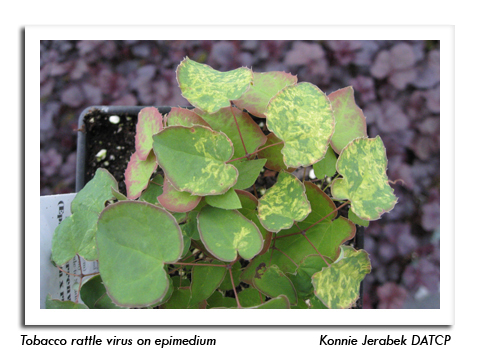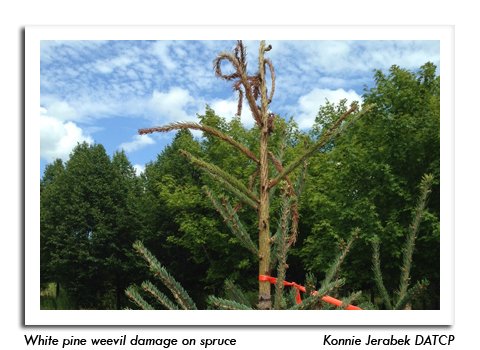
 |
|
|
Nursery & Forest
Volume 61 Number 13 Date 07/28/2016 IRIS RUST - This disease was diagnosed by the Plant Industry Lab on iris 'Louisiana' from Waukesha County. Symptoms of rust on iris are numerous small, pale leaf spots that display an orange-brown 'pustule' of spores when viewed under magnification. As summer progresses, these orange pustules are replaced by black ones and infected leaves turn yellow or brown and die back from the tip. Removing and disposing of all leaf debris at the end of the year is important where iris rust is a problem. JAPANESE BEETLE - Damage to nursery plants has been noted by inspectors in Eau Claire, St. Croix and Waukesha counties. The pattern of Japanese beetle feeding on tissues between the leaf veins causes leaves to appear lacy or "skeletonized." Although most established, healthy trees and shrubs can withstand severe beetle defoliation, repeated years of attack can reduce vigor, quality, and render trees more susceptible to secondary pests. Spot treatment with a contact insecticide should be considered for nurseries if Japanese beetle pressure is high and defoliation levels are unacceptable. RAGWORT LEAFMINER - Nursery inspectors found leaf mines caused by the larval stages of this insect on ragwort (ligularia) plants in a Sawyer County nursery. The serpentine mines are formed as the larvae tunnel through the leaf tissue and initially appear whitish in color, eventually turning tan or brown later in the season. Damage from leaf miners is usually minor and a cosmetic concern. TOBACCO RATTLE VIRUS - Epimedium plants from a St. Croix County nursery were diagnosed with tobacco rattle virus (TRV) this week. TRV infects numerous ornamentals, and has been particularly prevalent on astilbe, coral bells, dicentra, and peony in Wisconsin. Symptom expression varies by plant species, but usually includes yellowish ringspots on epimedium. TRV is readily transmitted through contaminated pruning and propagating tools that spread sap from one plant to another, as well as by natural vectors such nematodes. To limit the spread of these destructive plant diseases to garden plants and crops, DATCP requires all virus-infected nursery stock to be removed from sale and destroyed. --Timothy Allen, DATCP Nursery Inspector LECANIUM SCALE - Severe dieback of hackberry limbs caused by this scale insect has been reported in St. Croix County. Egg hatch occurred several weeks ago and the mobile crawlers are no longer active in most parts of the state. Mid- to late June is usually the optimal time to target the yellow crawlers with horticultural oils or soaps, insect growth regulators, or conventional insecticides, before they settle onto the twigs and branches. DATCP inspectors noted that some of the observed scales had been parasitized, indicating that biological controls were present. Chemical control may not be necessary where natural enemies are active. WHITE PINE WEEVIL - Examination of spruce and pine trees for evidence of larval infestation, such as wilted leaders and brown, discolored needles on the top lateral growth, is recommended before the end of the month. This insect can be controlled by pruning the infested area 6-10 inches below the wilted leader before adults emerge (by mid- to late July). The cut end must appear clean with no brown frass ring. Pruned tops should be removed and disposed of away from fields to prevent reinfestation, since the adults will continue to emerge from cut leaders. -- Konnie Jerabek, DATCP Nursery Inspector 





|
|
|